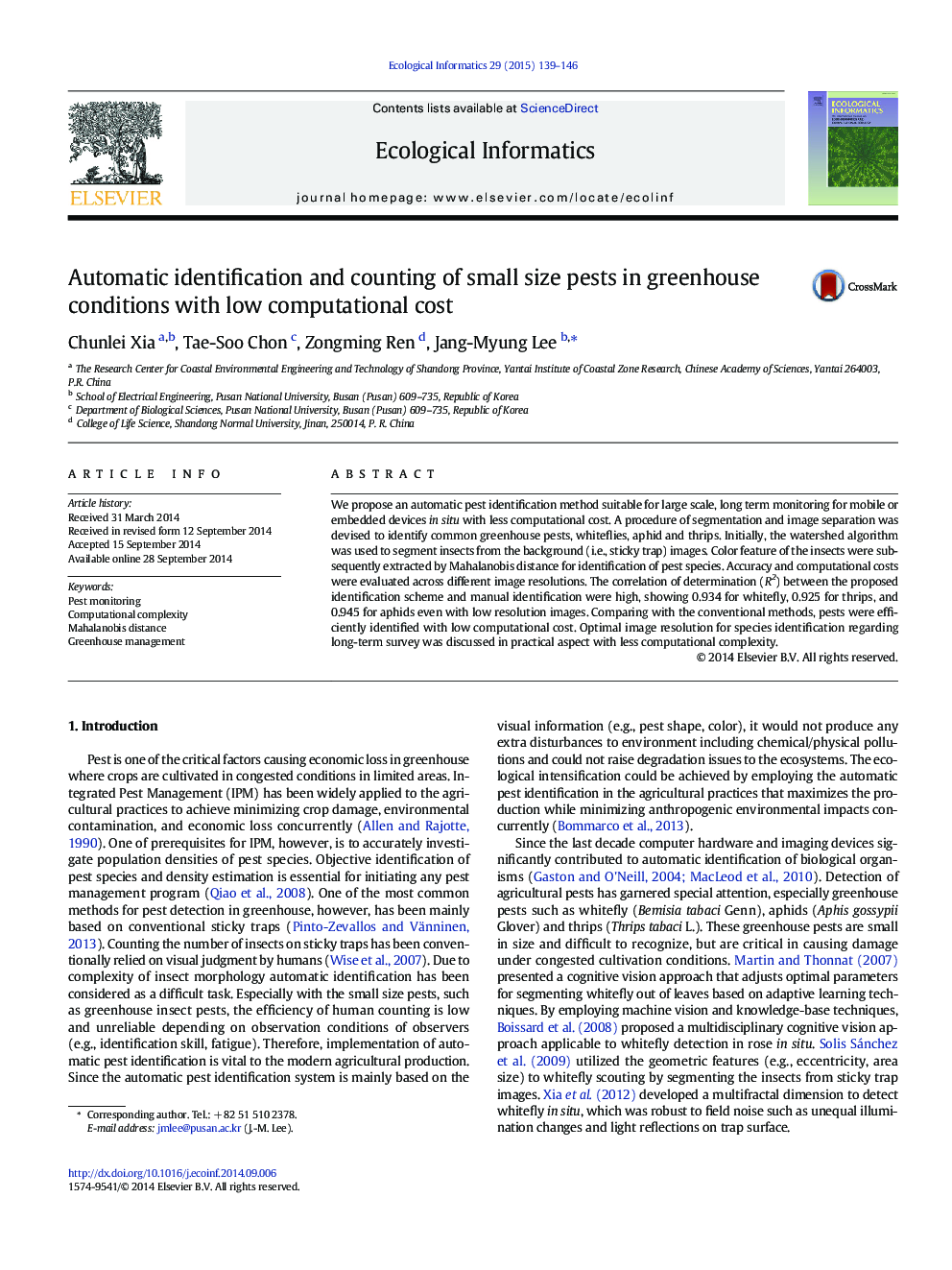| Article ID | Journal | Published Year | Pages | File Type |
|---|---|---|---|---|
| 4374800 | Ecological Informatics | 2015 | 8 Pages |
•A low computational recognition method is proposed for long term pest monitoring.•Mahalanobis distance classifier was utilized to identify small sized pest species.•Three common pest species in greenhouse were accurately segmented and identified.•High accuracy of pest identification was achieved on low resolution of images.•The proposed method would be practical for large scale in situ pest sensing network.
We propose an automatic pest identification method suitable for large scale, long term monitoring for mobile or embedded devices in situ with less computational cost. A procedure of segmentation and image separation was devised to identify common greenhouse pests, whiteflies, aphid and thrips. Initially, the watershed algorithm was used to segment insects from the background (i.e., sticky trap) images. Color feature of the insects were subsequently extracted by Mahalanobis distance for identification of pest species. Accuracy and computational costs were evaluated across different image resolutions. The correlation of determination (R2) between the proposed identification scheme and manual identification were high, showing 0.934 for whitefly, 0.925 for thrips, and 0.945 for aphids even with low resolution images. Comparing with the conventional methods, pests were efficiently identified with low computational cost. Optimal image resolution for species identification regarding long-term survey was discussed in practical aspect with less computational complexity.
